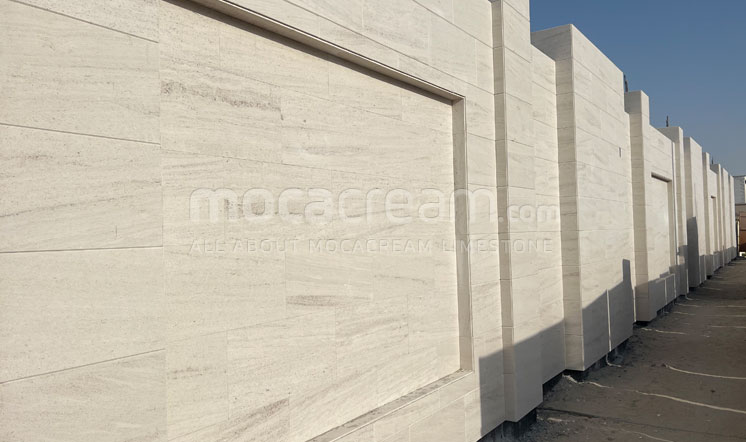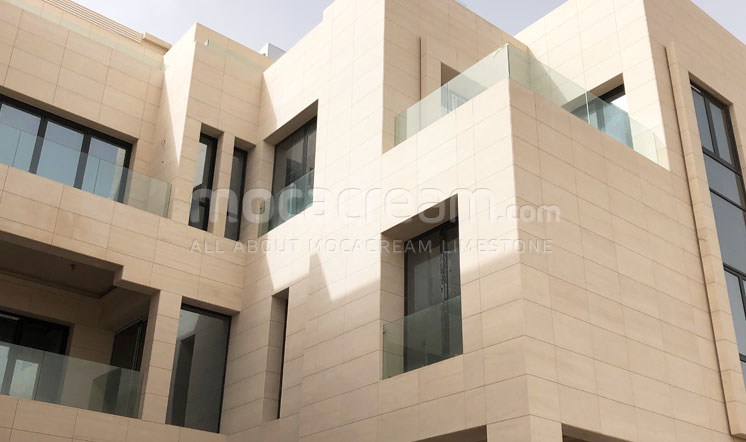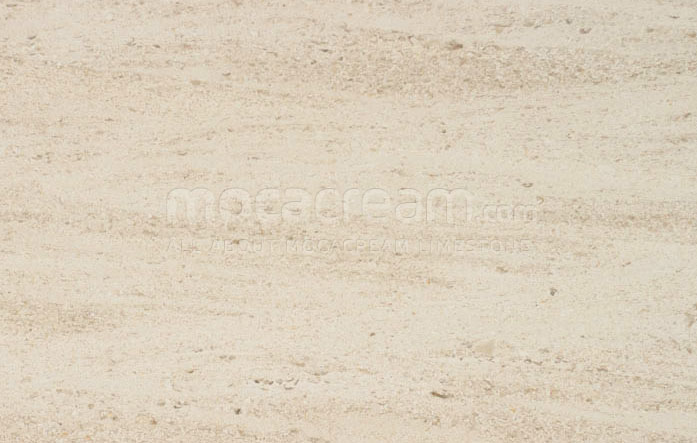Limestone supply in the Middle East market
The Middle East is a great market for the import of limestones originated from countries like Portugal, Spain, Turkey and more. There have been and still there are big number of large scale projects in the region, which together with a growing appetite for light beige and white colored limestones for cladding and decoration, has seen a boom on the demand for limestones
If countries like Saudi Arabia and Qatar have their own large scale projects to fulfill, other countries like the UAE, Kuwait or Bahrain also have their own building markets for villas and private projects up and running, where demand for limestone is considerable. These are used on exterior cladding, but also landscaping, flooring, decoration and more. We present here some of the most relevant limestone at the moment.
Moca Cream
The Moca Cream is a beige colored limestone, which is characterized by its parallel vein, medium grain and uniform background. Its main variations depend on the thickness of the grain and if it is cut in favor or against the vein (where it shows no parallel vein). This is the most well-known type of Moca Cream.
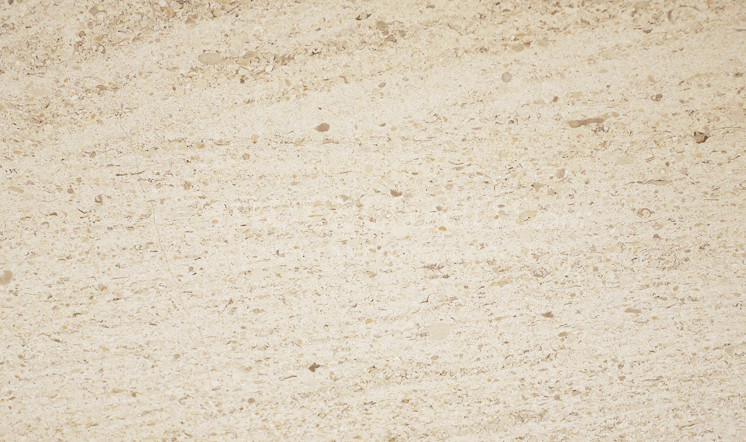
Limra
The Limra is a white colored limestone, with very thin grain and quite uniform background. The Limra is mostly characterized by its plain and uniform white color, as well as limited color tone variation. It is one of the most uniform white limestones available in the market.

Jura Beige
Light beige limestone, with thin to medium grain and irregular background. This limestone is mostly characterized by the presence of strong signs of fossils with darker color, sparsely distributed. The Jura is the essential limestone from Germany with incredible demand and uses found pretty much on any type of application. The Jura is also a very hard limestone that can easily adapt to different climates.
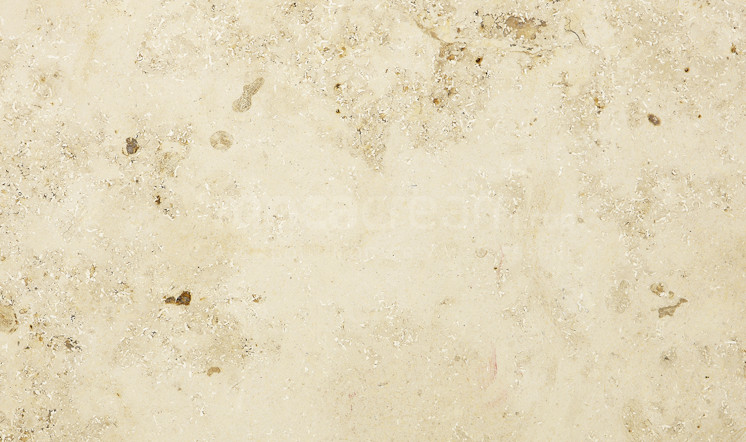
Moleanos
The Moleanos is a beige colored limestone, with a slight greyish tonality, thin grain and several brownish fine spots. It presents some discreet signs of fossils throughout its surface. Its main variations depend on the color, grain and amount of fossils. This is a fairly hard beige colored limestone.
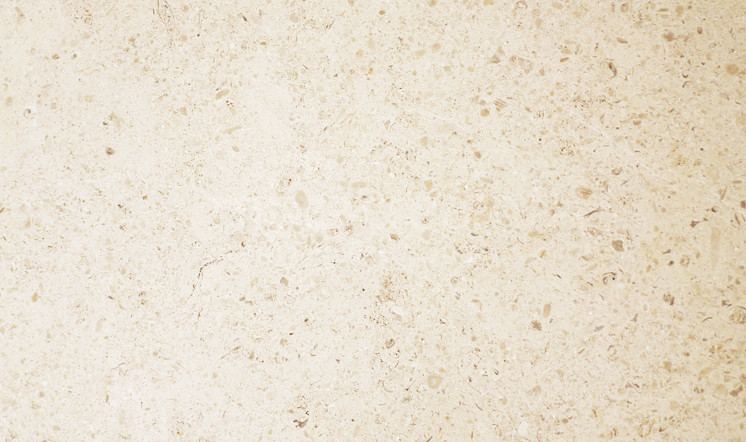
Blanco Paloma
With a very uniform background in terms of color and grain, the Banco Paloma has become one of the top beige limestone selections in Spain. The international demand has also increased in the last decade. One of the unique characteristics of this limestone is the existence of some small shells and fossils that may appear throughout the surface.
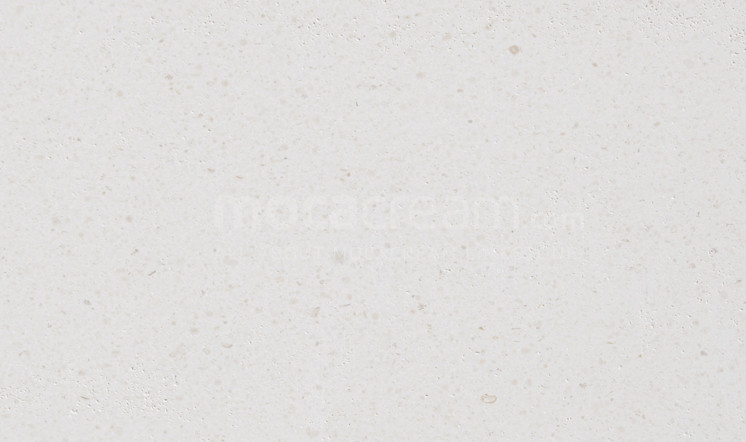
Crema Cenia
Light brown-creamy limestone with a medium hardness and thin grain. The Crema Cenia presents a relatively uniform background with occasional darker signs of fossils and small shady brown colored areas. This is a fairly popular limestone in Spain with a considerable market and an expanding international presence. The extraction point for the Crema Cenia is located in the north-east of Spain.
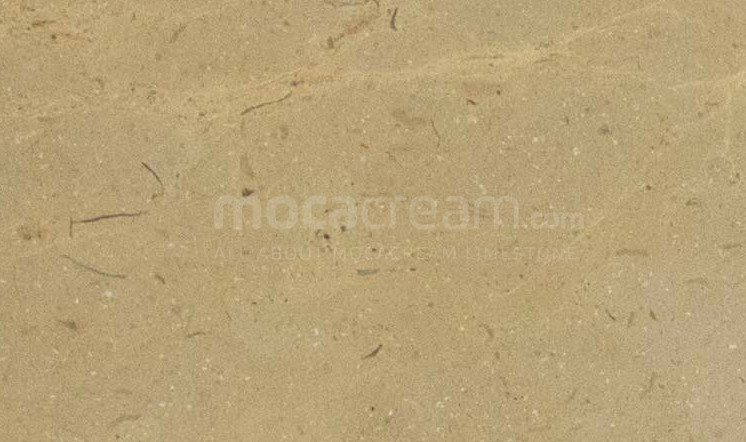
For more information about any of these limestones, visit Globalstoneportal.


